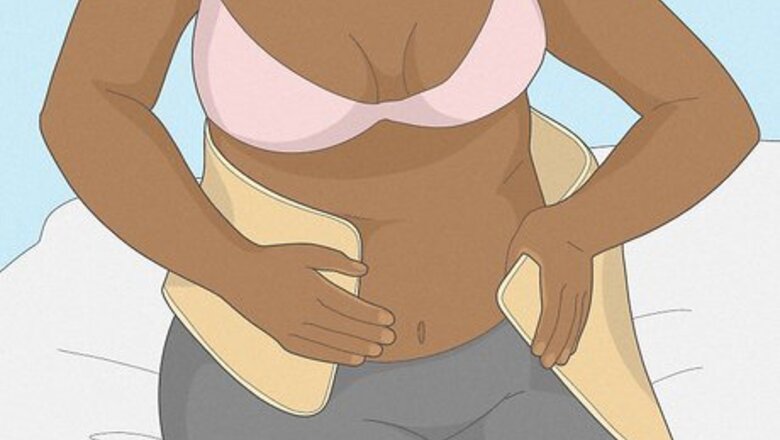
views
X
Expert Source
Jami YaegerParenting Specialist
Expert Interview. 29 September 2020.
We’ll show you how to use your belly band for maximum comfort and recovery, and fill you in on all the ways it can help you. We’ll also help you choose the right band type for your postpartum needs.
- Wrap the Belly Bandit around your midsection after giving birth so that it provides low-moderate pressure, but doesn’t constrict your movement or breathing.
- Wear your belly band immediately after postpartum (with your OB/GYN’s approval) for 2-3 hours at a time, with 1-hour breaks in between.
- A belly band can help provide pressure to your midsection, helping your body heal and alleviating discomfort or pain in your back or pelvis.
Using a Belly Band
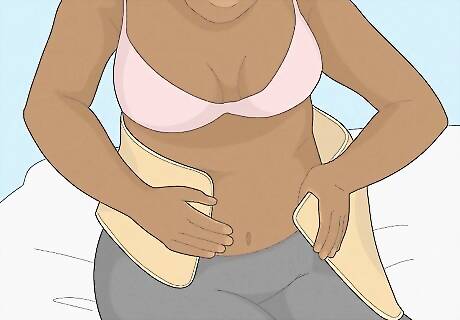
Wrap and secure the belly band around your midsection. After birth, take the belly band and wrap it around your abdominal area so that it’s snug, but not constricting. Most belly bands use velcro closures or other simple fasteners, so adjust these until the band sits securely around your belly and supplies light-moderate pressure, without restricting your mobility or ability to breathe. There are a number of different belly bands on the market, so consult your model’s packaging for specific application instructions. Wearing the wrap too tight may actually slow healing or lead to other postpartum complications, like back pain. On the other hand, wearing a loose band won’t provide effective support. Note that full-sized bands that cover and apply pressure to your entire belly are only for use after giving birth. If you’re still pregnant, opt for a similar maternity support belt and fasten it securely on your hips, on the under curve of your belly.

Wear the belly band for 2-3 hours at a time, with 1-hour breaks. If you feel the need, start wearing the band immediately after giving birth, with the approval of your doctor or OB/GYN. To avoid reduced circulation or developing a dependence on the band, only wear it for 2-3 hours at a time, taking 1-hour breaks in between. Wear it as you go about your day, or for a couple hours at night to make sleeping more comfortable, or both! If you had a c-section, talk to your OB/GYN about how soon you can start wearing a band. They may recommend waiting 2-3 days postpartum to allow the c-section incision to heal. Be sure to remove the band before showering or swimming to keep it clean, dry, and free of mold or mildew.

Put the belly band under or over your clothing, to your preference. Some belly bands are thin and discreet enough to be worn under your usual clothing. Others are a bit bulkier (these usually provide more pressure and support), and may feel more natural worn over your shirt. Wearing a band over your clothes might not give you the same level of direct support as having the band pressed up against your skin, but may provide a more comfortable layer of padding between you and the band. Try both ways for 10-20 minutes, and use whichever feels most comfortable for you. If you are recuperating from a C-section, applying the band to your skin (but over a bandage) may help support and protect your incision. Consult the care label on your band for washing instructions. When in doubt, soak the band in mild detergent and cool water for about an hour, rinse it thoroughly, then let it air dry for 4-5 hours.
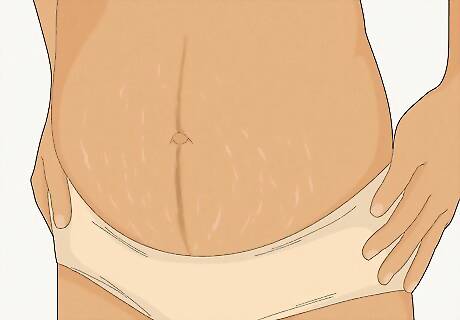
Stop wearing the band when you start to feel comfortable without it. Many manufacturers suggest using a postpartum belly band for up to 4-8 weeks. Wear the postpartum band for as long as you need, until you feel confident and secure in your balance, posture, and healing to go without it. Each person has a different experience with their belly band. Some might wear their band for a longer duration than others. Make sure you do what feels comfortable for you, and what your doctor recommends.
Benefits of a Belly Band
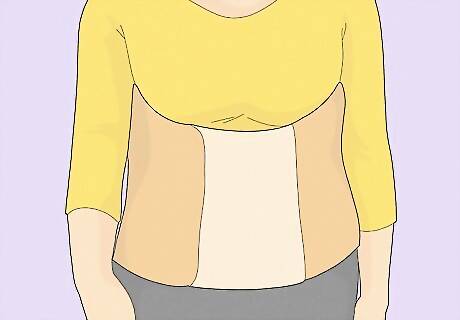
Wear a belly band to help your body heal after pregnancy. After giving birth, your abdominal muscles may stretch or even separate as a side effect of birthing strains. This separation tends to heal naturally, but many new mothers choose to wear a belly band in order to provide added pressure and comfort during recovery, and in some cases speed up the healing process. While a belly band may provide added support, there’s no guarantee it will speed recovery or flatten your stomach postpartum. Talk to your doctor about recovery if you’re concerned about your healing process. Some manufacturers claim that belly bands can eliminate or reverse stretch marks, but there’s no evidence of this. Stretch marks are a common and natural part of pregnancy.
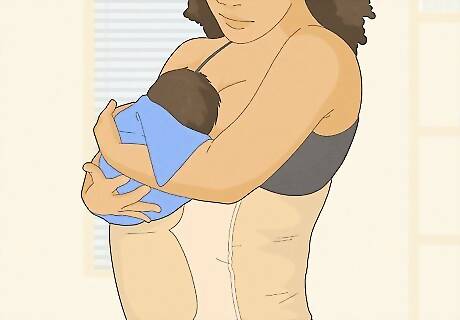
Use a belly band to provide support while breastfeeding. Many belly band models offer support or coverage to the upper body when breastfeeding. This helps prevent stiffness caused by breastfeeding positions. Ensuring that your core and back are compressed with a belly band can make breastfeeding, and the accompanying uterine contractions, less painful for some mothers.

Wear a belly band to help protect C-section scars. Internal stitches from a C-section can be painful and uncomfortable, so it’s important to support the mid-section during recovery. Wearing a belly band can help provide pressure to the area, reducing pain or discomfort. It may also help encourage proper posture, which may protect the incision and promote proper healing. Avoid wearing a belly band directly on top of an uncovered, healing C-section scar, as it may cause irritation. Protect your incision with a bandage or an added layer of clothing.

Use a maternity belt for support during pregnancy. A maternity belt is similar to a belly band, though it’s often thinner and leaves your belly exposed, providing support and pressure to the underside of your belly. Many women use maternity belts during pregnancy to relieve pressure on their back or pain in their pelvis while supporting their weight up front. Opt for a maternity belt if you’re still pregnant, and switch to a belly band after pregnancy.
Choosing a Belly Band
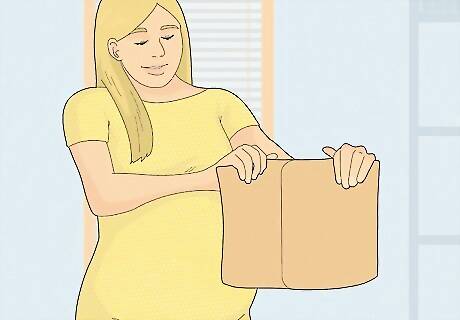
Shop for a postpartum belly band during your pregnancy. Purchasing a belly band during your pregnancy ensures that you’ll have it available for use shortly after birth, when you may need it the most. In the days after birth, you may experience discomfort or pain, and having a belly band on hand to use immediately may ease that discomfort. Or, buy a maternity belt during pregnancy to help with pre-birth discomfort.

Select a wrap, belt, or shapewear band, depending on your needs. Many manufacturers size belly bands by the circumference around the widest point of your belly. Then, there are a number of different designs and models on the market that all have different uses and benefits, so think about your needs and choose one that suits you. Wraps are perhaps the most common type, and cover your entire midsection, offering the most support. However, they may restrict your movement or be slightly less comfortable than other types. Belts are thinner than wraps and are often meant to support weight during pregnancy, but may be worn postpartum for support, as well. Some bands are multi-part and have straps that can be adjusted for more customizable pressure and support. Pregnancy shapewear is often more discreet and comfortable, but may provide less support. Avoid cinchers or corsets, which are primarily aesthetic and don’t do much to offer meaningful support.
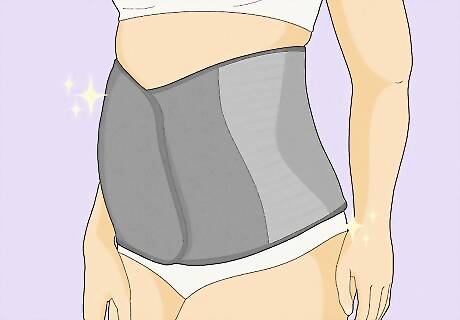
Opt for a high-quality band made of soft and comfortable materials. There are plenty of different kinds of belly bands within all price ranges, but make sure you don’t skimp out when purchasing yours. Look for one that’s adjustable, so that you can tailor it to your belly. Make sure it’s not too bulky and avoid any itchy or scratchy materials since you’ll likely be wearing it for several hours at a time. If possible, try on different bands to see how they fit your body, if they ride up, or if there are any uncomfortable parts or components. If you purchase a belly band online, make sure that the retailer has a return policy in case you find that your binder does not fit correctly.




















Comments
0 comment